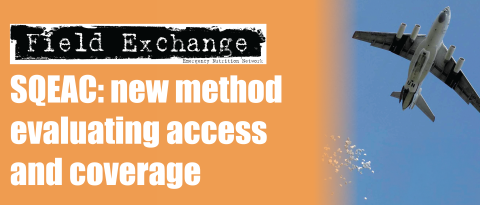New publication on Household Economy Approach

Save the Children UK (SC UK) and FEG Consulting (formerly known as the Food Economy Group (FEG)) have just brought out a new publication 'The Household Economy Approach: A guide for programme planners and policy makers'. It is part of a toolkit for the southern Africa Regional Hunger and Vulnerability Programme (RHVP), aimed at strengthening the capacity of staff from government and national and international nongovernmental organisations (NGOs) to undertake vulnerability assessment and analysis in southern Africa.
To date, guidance on the Household Economy Approach (HEA) has been provided by the manual 'The Household Economy Approach - a resource manual for practitioners' (Save the Children, 2000), and by resources and training materials produced since then by the FEG and SC UK. The toolkit aims to bring together and consolidate this material and provide up-to-date guidance on the approach, its use in the field and its application for particular purposes.
The toolkit comprises three elements:
- The Practitioner's Guide to the HEA1, which is a 'how to' guide for those participating in field work.
- The Household Economy Approach, which is a guide for programme planners and policy-makers, targeted primarily at those who are involved in using assessment results to inform decisions on response and to assist in programme planning. It aims to help policy-makers and programme planners understand the methodology, interpret results and engage critically in the process of translating results into programme and policy recommendations.
- The HEA training guide, targeted at those facilitating HEA trainings.
The new guide begins with an overview of the analytical framework (Chapter 2), outlining essential steps in HEA and why these are necessary. Chapter 3 describes the application to which HEA has been put over the past 15 years. The guide then gives an overview of how HEA is carried out - how information has been collected in the field to date and the tools that assist in HEA analysis (Chapter 4) and considers why such field methods are used and whether the information and analysis is reliable (Chapter 5). The linkages between HEA and other approaches and areas of inquiry are described in Chapter 6, which also outlines how HEA can be applied to a number of issues of relevance in the analysis of vulnerability, poverty and chronic food insecurity. Some of the criticisms that have been made of HEA are discussed in Chapter 7. Finally, a number of the products that can be generated from HEA analysis are outlined in Chapter 8.
The HEA Guide for programme planners and policymakers is available to purchase from SC UK, price £14.99 sterling plus postage and packing (rates vary according to number of copies ordered and destination). For orders, contact: Save the Children Publications, c/o NBN International, Estover Rd, Plymouth PL6 7PY, UK. Tel: 0044 (0)1752 202301 Fax: 0044 (0)1752 202333 email: orders@nbninternational.com http://www.savethechildren.org.uk
1Download at http://www.savethechildren.org.uk/en/54_4200.htm
Imported from FEX website


